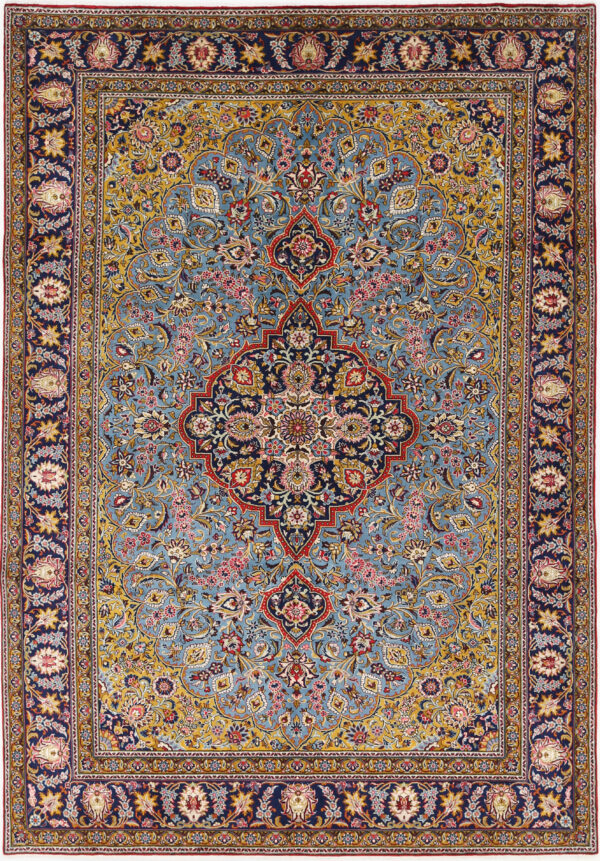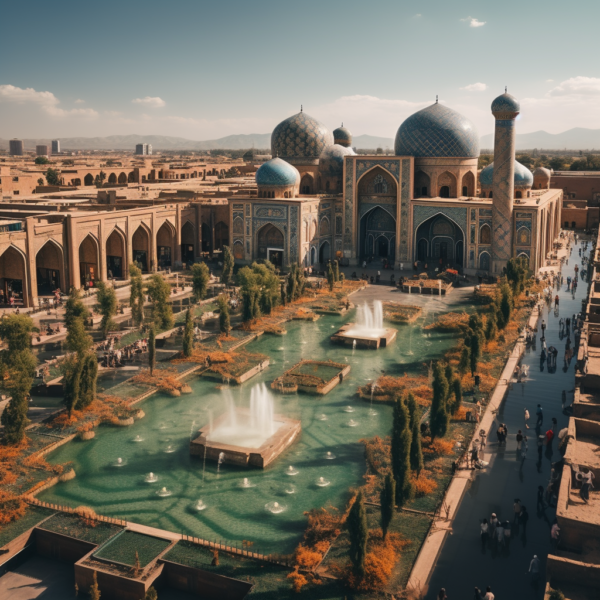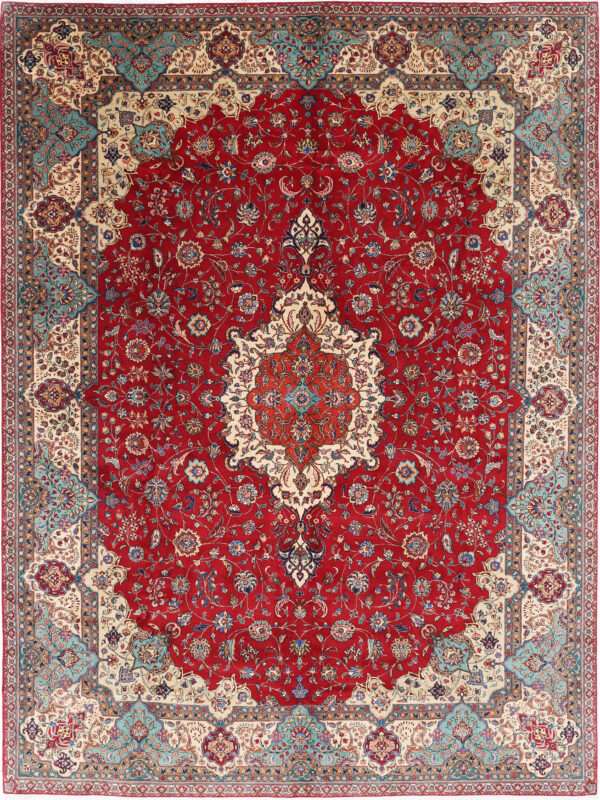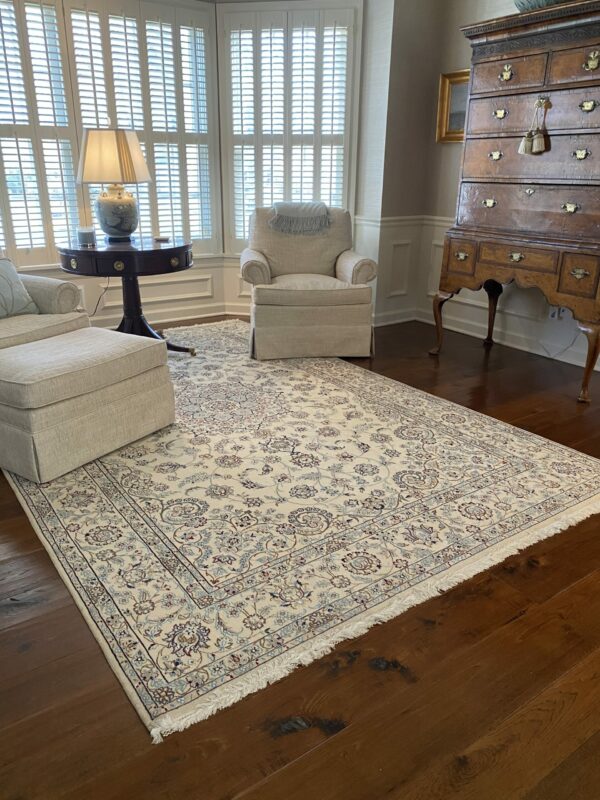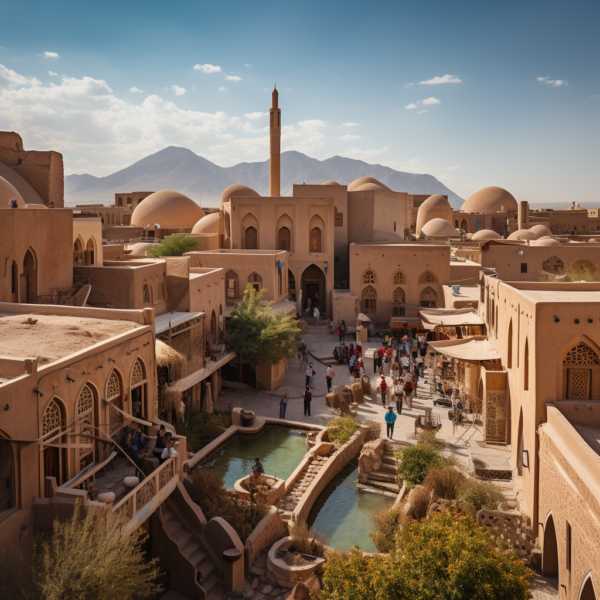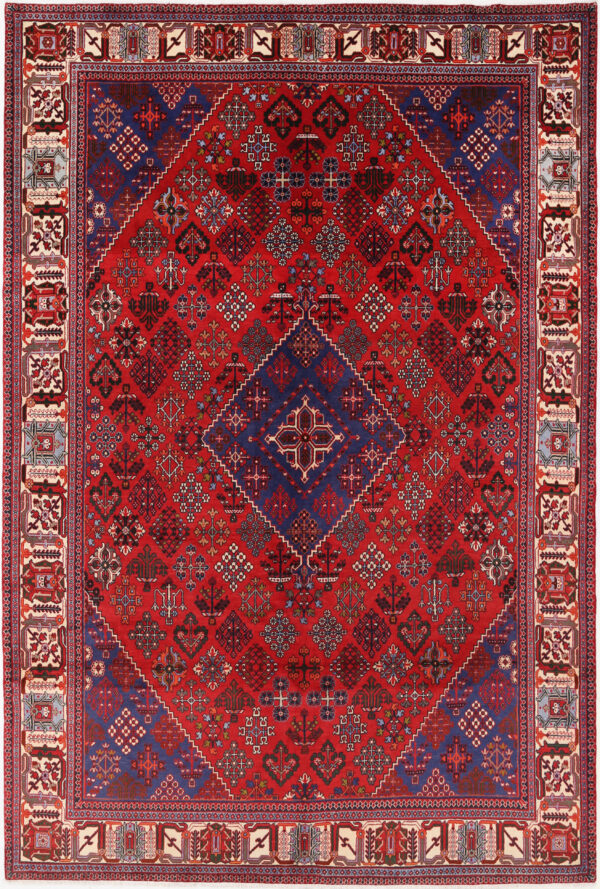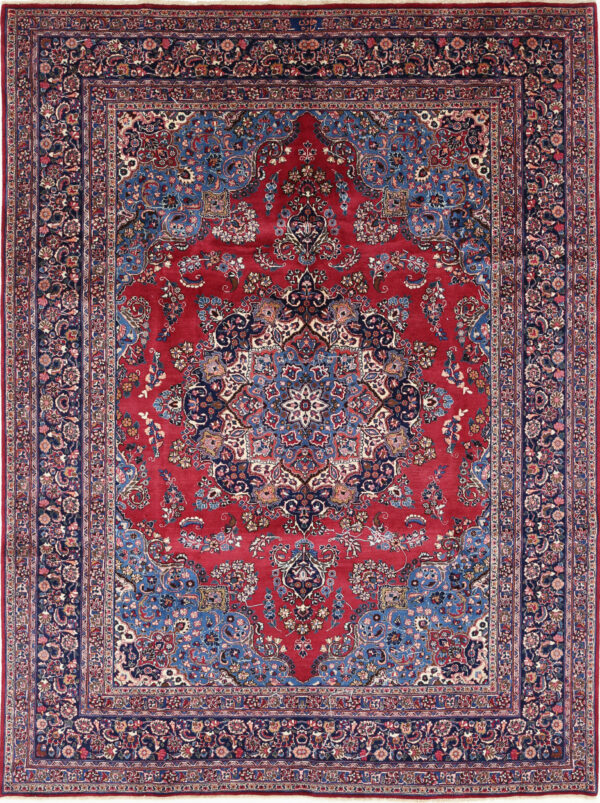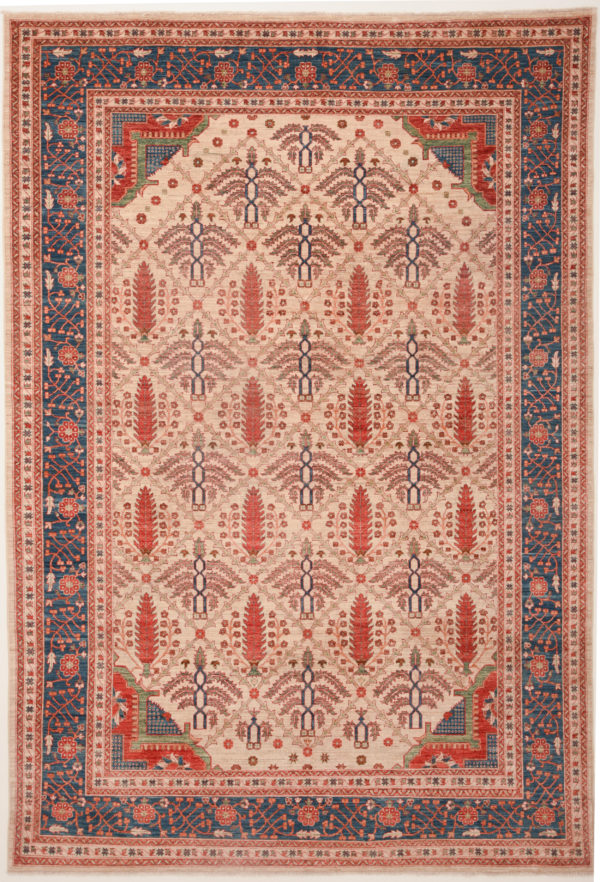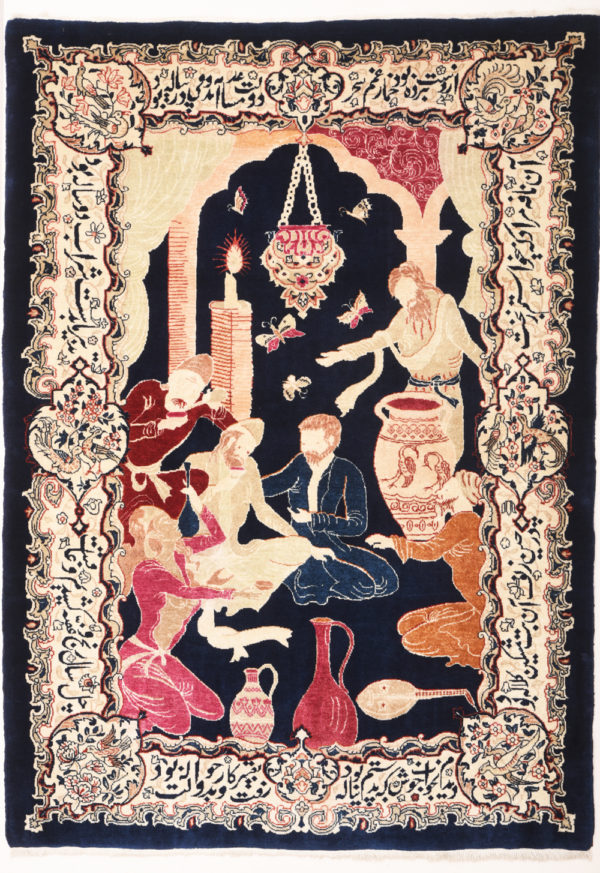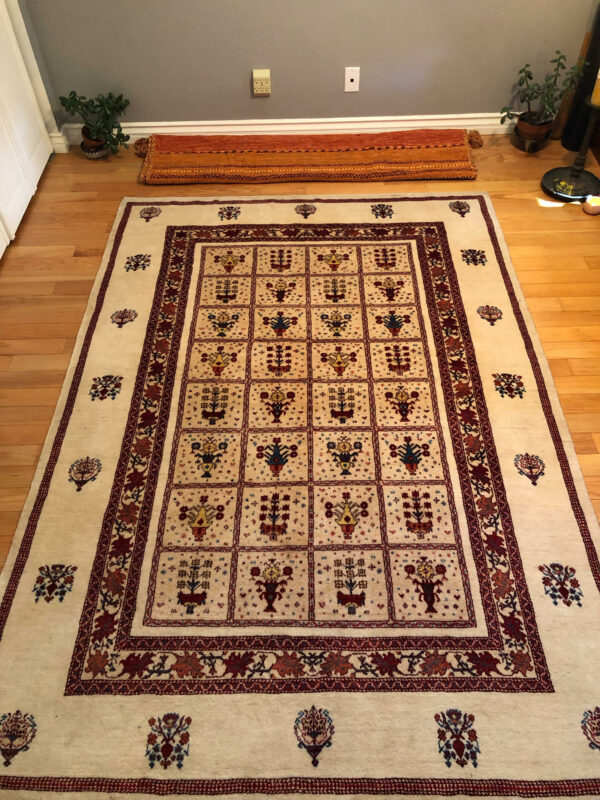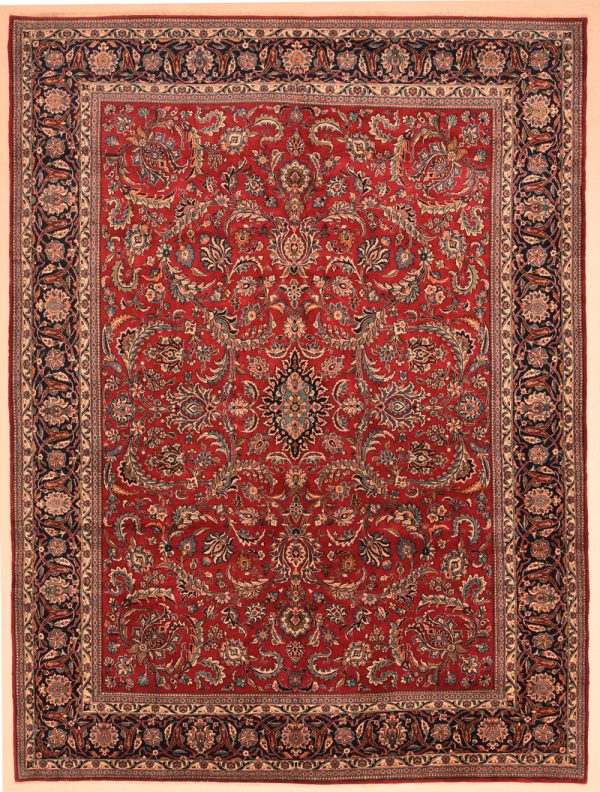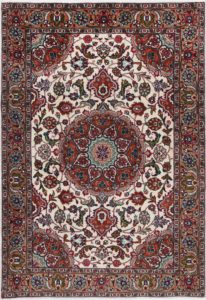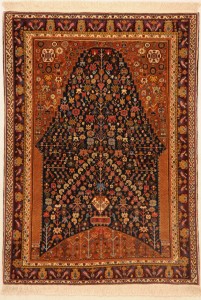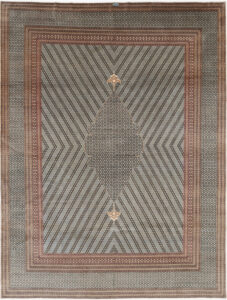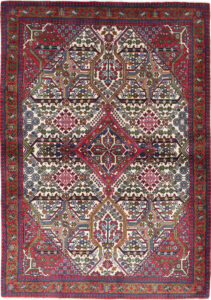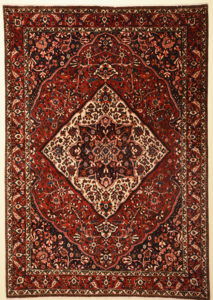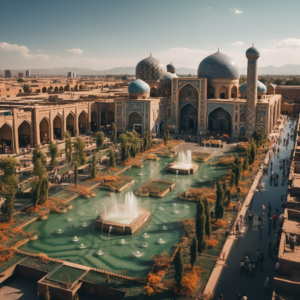he enchanting world of Persian rugs is renowned globally for its deep historical roots and exquisite craftsmanship. But where are most of these highly sought handmade rugs made? Let’s unravel the geographical tapestry of Persian rug production.
In this article, we’re journeying through Iran to explore the top ten cities famous for skilled artisans producing these exquisite Persian carpets. Understanding the origins of your ‘Persian rug’ and the uniqueness of each ‘Persian rug-producing city’ will deepen your appreciation for these timeless pieces.
Where are most Persian rugs made?
Persian rug making in Iran dates back to ancient times, with the craft deeply rooted in the country’s rich cultural and artistic history. This ancient art form likely originated from the nomadic tribes of Persia, who used rugs for practical purposes like floor coverings and wall hangings in their tents. Over time, these functional pieces evolved into intricate artworks, reflecting the weavers’ creativity and the region’s diverse influences.
Cities like Tabriz, Kashan, and Isfahan became pivotal centers for this evolving craft, each developing unique designs and weaving techniques. Tabriz rugs is celebrated for its diverse patterns, Kashan for its elegant floral motifs, and Isfahan for its luxurious and finely detailed rugs.
Other significant regions, such as Kerman with its vibrant colors and Nain with its delicate designs, also contribute to the rich tapestry of Persian rug making, showcasing the art’s evolution from a nomadic necessity to a symbol of Iranian heritage and craftsmanship.
1. Qum
Qum, often referred to as the silk rug paradise, is a city that has earned international acclaim for its magnificent silk Persian rugs. Unlike other regions, Qum predominantly uses pure silk, both in the pile and the foundation, giving the rugs a unique luster and softness.
The silk used in Qum rugs gives them a distinctive sheen and softness, making these rugs highly sought after for their luxurious appeal. Perfect for collectors and enthusiasts, a Qum Persian rug is a symbol of elegance and sophistication. The silk allows for a very tight weave, which supports extremely detailed and vibrant patterns.
These rugs are not just floor coverings; they are works of art, known for their sheen, delicate and intricate patterns used, and the skilled craftsmanship that goes into each weave.
2. Isfahan
Isfahan, located in the heart of the Isfahan Province with over 15 districts and several counties, stands as a major weaving center in Iran and a city of great historical importance. During the reign of the Safavid kings, known for their deep love of art, Isfahan experienced a golden era in rug weaving. These rulers not only attracted but also nurtured skilled artisans across various crafts, including rug weaving, by providing them with the finest materials. This period saw the creation of exceptional art pieces, contributing to Isfahan’s later recognition as a World Heritage Site.
The city’s rug weaving tradition, which flourished under the Safavid dynasty, encountered a period of decline after the dynasty’s fall and the subsequent Afghan invasion. However, a significant revival occurred in the 1920s, as the people of Isfahan returned to their ancestral craft. They began weaving rugs with characteristic Safavid designs once again, reigniting the city’s reputation as a key player in the Persian rug industry. This resurgence marked Isfahan’s return to its former glory as a center of exquisite rug making.
Today, Isfahan rugs are highly coveted by collectors worldwide, known for their intricate designs, often featuring symmetrical floral and hunting scenes, and the luxurious blend of high-quality wool and silk.
3. Tabriz
Tabriz, an ancient city situated on the slopes of Sahand Mountain in northwest Iran, boasts a rich and illustrious history in Persian rug-making that dates back to the 15th century. Historically serving as the capital of the Safavid dynasty and later home to the crown prince of the Qajar dynasty, Tabriz has been at the forefront of rug weaving since around 1501. This makes it one of the oldest rug manufacturing regions in the world, renowned for its master weavers and their exceptional craftsmanship.
In the heart of Tabriz, a city known for its diverse range of designs and qualities, rug weaving is an art form passed down through generations. The city and its surrounding villages have long been recognized as a central hub for rug weaving, contributing to its status as a leader in the oriental rug market. The weavers in Tabriz are celebrated for their speed and high skill level, creating hand-knotted rugs that vary significantly in quality, with knot densities ranging from 50 to 500 knots per square inch.
The 19th century marked a pivotal era for Tabriz rugs as Western countries discovered their beauty and intricacy, thanks to the efforts of three Persian master weavers – Sheik Safi, Kurban Dai, and Haji Jalili. This exposure led to an increase in the export of these rugs to Western markets, enhancing their global appeal.
4. Nain
Nain, a city located relatively close to Isfahan, has developed its unique style of rug making. Nain is known for producing Persian rugs that are among the finest in the world, utilizing high-quality wool and, occasionally, silk highlights.
The use of silk in Nain rugs adds to their luxurious feel and appearance. Nain Persian rugs are a perfect blend of delicacy and elegance, making them a prized possession for many rug lovers. These wool rugs are celebrated for their low pile, finely hand-knotted designs often featuring intricate details and a subtle color scheme that typically revolves around shades of blue and ivory.
Initially, Nain’s rug production was heavily influenced by the nearby city of Isfahan, as many of their rugs were woven by Isfahan’s weavers. This close connection is evident in the design elements shared between Isfahan and Nain rugs.
Despite these initial similarities, Nain quickly developed its unique style. Once local tribes and artisans began weaving rugs themselves, they infused their personal flair into the designs. This distinctive approach led to Nain rugs acquiring unique color schemes and design characteristics, setting them apart from other Persian rugs.
5. Kashan
Kashan, once a trading center in the Silk Road, continues its legacy in rug making.
Kashan, one of Iran’s oldest cities, is enveloped by the desert in the central region of the country. The harsh desert conditions, with limited water supply from the western mountains, resulted in locally available wool that was stiff and coarse, not ideal for rug weaving. To overcome this, early Kashan rug makers imported merino wool from Manchester, known for its softness and fine quality. This transition marked a significant shift in Kashan’s rug-making history, as the use of superior wool from Manchester and later from Sabzevar – a region in Iran known for high-quality wool – led to the production of exquisite Persian rugs.
The rich history of Kashan rugs dates back to the 17th century, during the Safavid era, with records indicating the existence of smaller silk creations from as early as the 16th century. Kashan’s prominence during the Safavid dynasty is not just due to its historical significance but also because it served as a luxurious retreat for the dynasty’s rulers. The city’s status as a royal holiday destination meant that everything, including the rugs, was crafted to reflect the highest standards of luxury and sophistication.
Today, Kashan rugs continue to be celebrated for their elegance and quality. They often feature traditional floral motifs, medallions, and a rich palette of colors, reflecting the city’s historical legacy and its long-standing commitment to offering only the best.
6. Mashad
Mashhad, a city imbued with deep spiritual significance in northeastern Iran, is renowned for its exquisite Persian rugs.
Often influenced by the city’s religious significance, Mashad rugs feature designs that may include spiritual motifs and Islamic artistry.
These rugs are known for their deep, rich colors like reds, blues, and ivories, often complemented by elaborate central medallions and floral borders.
Rugs from Mashad are often larger than those from other regions, making them ideal for grand spaces and ceremonial areas.
7. Bijar
Bijar, a small town in the Kurdistan region of Iran, is renowned for producing what are often called the “Iron Rugs” of Persian carpets.
These rugs are celebrated for their exceptional durability and dense weaving. The unique technique used in Bijar involves wetting the wool during the weaving process, which results in a remarkably tough and heavy rug that can withstand years of heavy use.
The designs are typically bold and geometric, often featuring medallions, Herati patterns, and rich, deep color palettes. Bijar rugs are perfect for those seeking handmade rugs that combine endurance with traditional beauty.
8. Sarouk
Located in the Markazi Province, Sarouk is famous for its finely hand knotted rugs that feature a unique combination of durability and sophistication.
These rugs often showcase elaborate floral and garden motifs, rendered in a lush yet subtle color palette. The wool used in Sarouk rugs is of the highest quality, and the finish is luxuriously soft, making them a sought-after choice for elegant interiors.
Known for their long lifespan, Sarouk carpets are a testament to the skillful blend of artistry and practicality in Persian rug making.
9. Qashqai
The Qashqai tribe, wandering through the Zagros Mountains, is celebrated for their vibrant and dynamic handmade rugs. These rugs reflect the rich nomadic heritage of the tribe, featuring bold colors, dynamic geometric patterns, and symbolic motifs.
Made from high-quality wool, Qashqai rugs are not just decorative pieces but narrate stories and traditions of a roaming culture. Their antique rugs are highly prized for their authenticity, robustness, and distinctive character, embodying the spirit of a people in constant motion.
10. Kerman
Kerman, a city with a longstanding history of rug making, is renowned for its sophisticated and highly detailed designs. These rugs often include elaborate floral motifs, vases, and garden scenes, reflecting influences from the royal courts of the Safavid dynasty.
Kerman rugs are known for their exquisite color combinations, often featuring wool and silk blends. The craftsmanship in Kerman rugs is unmatched, making them some of the highest quality Persian carpets available. Their elegance and refinement make Kerman rugs a choice of luxury and history for any collector or enthusiast.
Which Cities Are Behind Iran’s Most Treasured Antique Rugs
The concept of a rug becoming an “antique” is not tied to a specific city but rather to the age and the quality of the rug. Generally, for a Persian rug to be considered an antique, it should be at least 80 to 100 years old and possess certain qualities such as craftsmanship, condition, and rarity. However, certain cities in Iran are renowned for producing rugs that often become valued as antiques due to their exceptional quality and enduring designs.
Cities like Tabriz, Isfahan, and Kashan are especially known for their high-quality rug production, and rugs from these areas are often sought after by collectors and enthusiasts. For instance, Tabriz has been a center of carpet production since the Safavid dynasty and is known for its diverse and intricate designs. Similarly, Kashan, with its history in rug making dating back to the 17th century, is famous for its traditional floral patterns and precise craftsmanship. Rugs from these cities, given their age, artistic merit, and condition, often attain the status of antiques and are highly prized in the world of Persian rugs.
It’s important to note that the journey of a handmade rug top to become an antique also depends on how well it has been preserved over the years. The materials used, the dyes, the knot density, and the overall quality of the weave play a significant role in determining its longevity and potential to become an antique over time.
Conclusion
The journey through the top 10 Persian rug-producing cities in Iran unveils a fascinating world where tradition, art, and history intertwine. Each city, from the silk wonders of Qum to the intricate designs of Kerman, contributes its unique voice to the chorus of Persian rug craftsmanship. The ancient art of Persian rug making, deeply embedded in Iran’s culture, is a testament to the skill, dedication, and artistic vision of its weavers.
These cities, with their distinct styles and methods, not only keep the ancient traditions alive but also ensure the Persian rug’s place as a coveted item worldwide. Whether it’s the spiritual motifs of Mashad, the robust “Iron Rugs” of Bijar, or the elegant florals of Sarouk, each rug tells a story of its origin, reflecting the soul of the city it hails from.
The understanding of how each handmade rug is a product of its environment, history, and people deepens our appreciation for these exquisite Persian carpets. They are not just decorative items but pieces of living history, each knot and color a testament to Iran’s rich heritage.
As we conclude our exploration, it’s evident that the Persian rug is more than a mere floor covering. It’s a symbol of cultural identity, a work of art, and a treasured heirloom, woven through time in the ancient cities of Iran. Their beauty, diversity, and artistry continue to captivate and inspire, making Persian rugs a timeless treasure in the world of fine craftsmanship and design.
